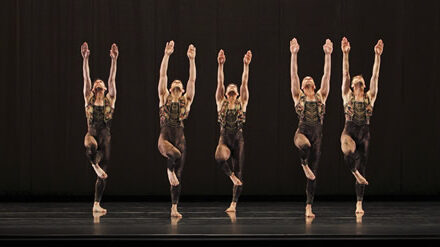As I left this Sunday afternoon concert, I overheard a man say, “I thought that a piano trio was going to be three pianos.” Calling the combination of a violin, a cello and a piano a “piano trio” in order to distinguish it from a “string trio” (violin, viola and cello) may seem like second nature to the cognoscenti, but to the general public it is not an obvious title. The welcome news is that the man had come to St. Matthias Episcopal Church for a concert without knowing exactly what he would hear, and had enjoyed what he experienced. While many chamber music aficionados come to these “First Sunday” programs on a regular basis, other attendees are newcomers to chamber music. Attracted by the pleasant space and the casual welcome of the series, they stay to discover the wide panoply of chamber music.
This was a traditional program: two trios from the classical period, one by Haydn and one by Beethoven. The performers, as is usual at St. Matthias, were a mix of talented amateurs and local professionals volunteering their services: Debra Belcher on piano, Brent Yingling on violin and Ron Lambe on cello.
The first work was the Piano Trio in C (Hob. 15/3) by Franz Joseph Haydn, an engaging piece which got off to a rocky start with a glaring wrong note by Ms. Belcher in the opening Adagio section. Things were better when the slow introduction gave way to the cheery body of the first movement. There are two ways to play an allegro movement like this (some editions call it a vivace): at breakneck virtuoso speed with lots of tension, or at a relaxed pace appropriate to normal mortals. This group adopted the latter approach, and I believe Haydn would have approved. After all, he wrote the work for amateurs to play in their homes – family entertainment before the age of television and video games.
The Andante is a lyrical movement in which the violin moves to the foreground for a time, and then the piano takes over in a highly ornamented passage. Variations follow, and Haydn even gives the cello some interesting passages. (He tended often to provide a cello part that simply duplicated the bass line of the piano.) The third movement Presto sets the piano in dialog with the two strings. Again, these players chose a relaxed tempo, consistent with their first-movement choice.
Next was the Piano Trio No. 1 in E Flat, Op. 1/1 by Ludwig van Beethoven. The Opus 1 piano trios were first performed in 1793 and published in 1795 when Beethoven was just 25 years old. In his Opus 1 trios and Opus 2 piano sonatas, Beethoven demonstrated two truths: (1) he had fully mastered the form and technique of his teacher Haydn, and (2) he had his own voice to add.
In the opening Allegro, the performers showed a good sense of shape and tempo, but were less successful in their balance; some violin passages were masked by the piano. In the Adagio second movement, the cello truly sang and the pianist brought out delicate middle-voice passages. The up-tempo Scherzo was appropriately rollicking, with a judicious reduction in tempo for the contrasting Trio section. The fourth movement Finale, performed without the repeat, capped the performance. The audience (including the man who was expecting three pianos) left having had a full and satisfying encounter with early Beethoven.
As I reflected about the program, I felt the musicians had not given a fully evolved performance of the Haydn trio. To do justice to any trio requires that the players develop a shared sense of the work and convince the audience of it. Despite some small technical errors, I was convinced by their Beethoven but thought their Haydn lacked subtlety. They may have under-rehearsed the Haydn in their anxiety to master the Beethoven.











